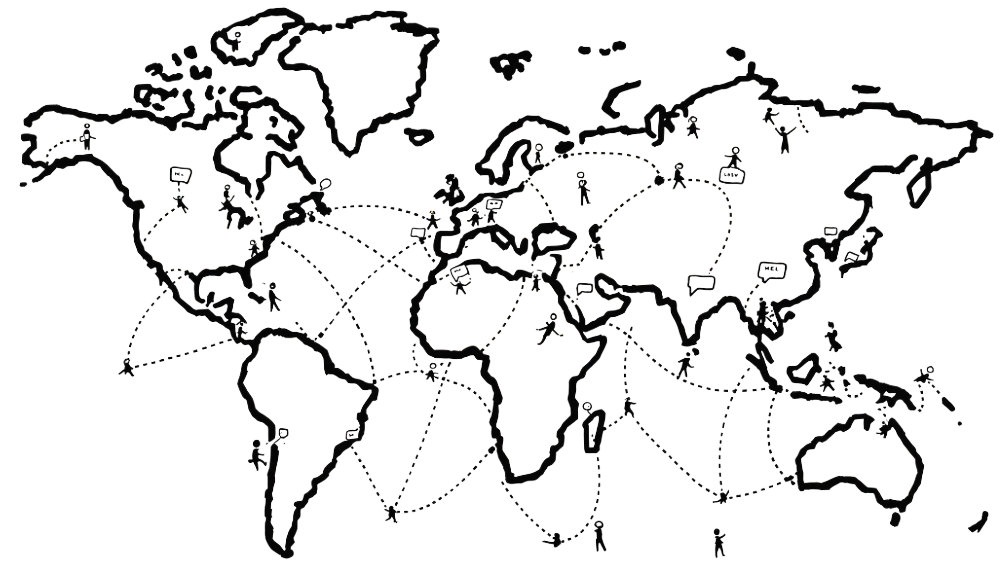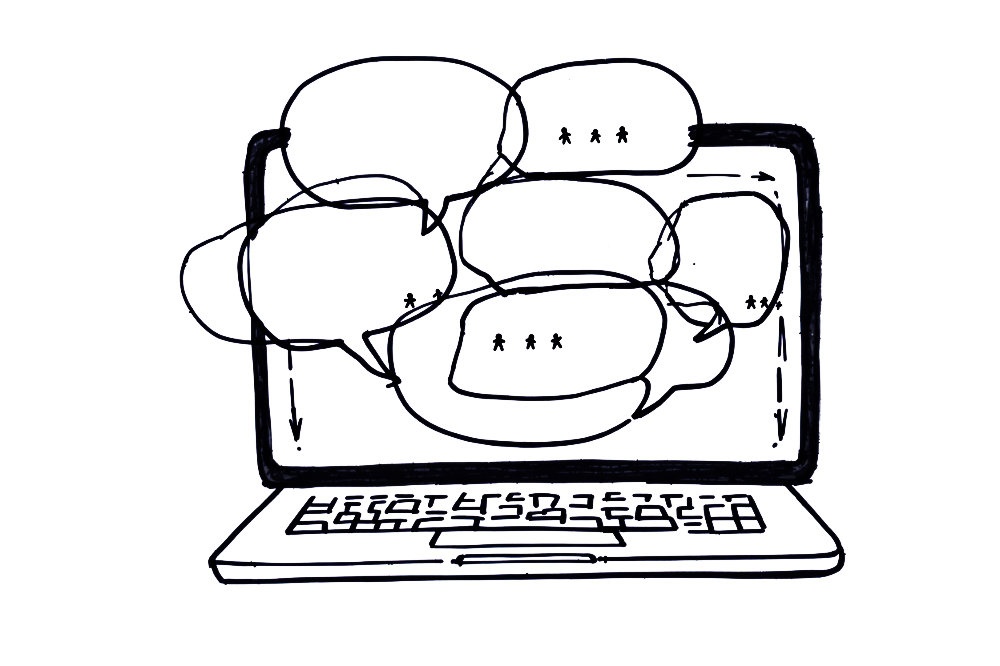I once believed that working remotely was a simple matter of handing people their tasks and letting them sort out the rest. No fuss, no complexity—just sign in from anywhere and make it happen. But after talking with a colleague who struggled to connect with a globally scattered team, I realized I had it all wrong.
People aren’t just productivity units who slot neatly into a digital workflow; they’re living puzzle pieces in an ecosystem that needs careful, human-centered design. The misunderstandings that bubbled up in that conversation changed my outlook forever.
Where the Old Assumptions Go to Die
We keep hearing the same glossy promises: remote teams save time, reduce costs, and magically solve talent shortages. But step inside one of these supposedly well-oiled machines and you’ll find friction.
Building a high-performing distributed team requires more than just tools - it demands a complete rethinking of how we connect, communicate and collaborate. A talented engineer in one timezone waits hours for feedback from a designer halfway across the world. A new hire can’t figure out the unwritten rules about when to speak up - this is why proper onboarding is crucial for remote teams.
Trust sometimes feels like smoke curling through a keyhole—tangible but elusive. The truth is, building a high-performing distributed team requires more than a tools list. It calls for rethinking how we hire, support, and connect people who may never share the same coffee machine.
We’re looking at a new model of teamwork: one that thrives in digital corridors and doesn’t rely on chance encounters in hallways.
The First Step: Clarity Beats Assumptions
Ask any remote worker about their biggest headache and “confusion” might top the list. Not just about tasks, but about what the team values and how decisions get made. If you’re serious about building a strong distributed team, start with radical clarity. That means documenting principles, roles, and processes. If someone new joins, they shouldn’t have to decode secret hierarchies or guess how to request help. Let’s stop pretending that norms will magically emerge in digital silence.
Idea: Create a living, accessible digital handbook that explains everything from communication cadence to how promotions are decided. Make it reflect not just policies, but the team’s personality. If humor is part of your culture, let it shine.

Hiring for the Remote Mindset
Not everyone who excels in an office setting will thrive in a remote environment - successful distributed teams require people who can navigate digital communication effortlessly and remain self-driven without constant supervision.
Talent is everywhere, but not everyone thrives in a remote setting. A brilliant coder who shines with face-to-face banter might struggle in a fully virtual environment. Hiring for a distributed team isn’t just about skill sets; it’s about finding people who embrace asynchronous workflows, navigate digital communication tools effortlessly, and remain self-driven without constant nudging.
Look for candidates who display thoughtfulness in online interactions and show comfort in clarifying assumptions before they become problems.
Machine Hiring, for example, aims to leverage technology that not only scans for relevant experience but learns to detect how candidates communicate. The idea is that subtle patterns in how someone structures a cover letter or responds to screening questions can reveal their ability to adapt to remote contexts. This isn’t about weeding out quiet personalities; it’s about finding people who translate their strengths through typed words, recorded demos, and collaborative platforms.
How do you test for remote readiness? One trick is to simulate the working environment. Offer a short assignment with minimal instructions and see how the candidate clarifies their doubts. Do they ask the right questions? Do they reach out at appropriate times? Their approach will tell you more than a polished LinkedIn profile ever could.
It’s Not Just About Tools
Tools without clear communication protocols create chaos rather than clarity. It’s tempting to think a new chat app or project board will solve every communication snag. But tools without rules create chaos.
Healthy remote communication goes beyond throwing Slack channels and video calls at a team. It’s about establishing shared etiquette: knowing when to jump on a quick call, when to send a detailed document, and when to let people work uninterrupted. You can feel this difference in teams that know how to use “async”—they respect timezones and personal schedules, yet remain responsive and considerate.
Practical suggestions:
- Have written guidelines for what warrants a synchronous meeting.
- Encourage small daily summaries in text channels to keep everyone aligned.
- Rotate meeting times if you have a globally distributed crew, so the same people aren’t always losing sleep.
Small adjustments prevent resentment from festering. They also ensure that remote life feels sustainable, not like a daily gauntlet.
More Fragile Than You Think
I once overheard a remote worker say, “Culture isn’t something we build; it’s something we discover.” While that might sound poetic, it’s dangerously passive. In a physical office, culture can arise organically from body language, jokes in the breakroom, or the way people pitch in to help. Distributed teams don’t have that luxury. If you don’t intentionally craft cultural moments, they might never appear.
It can be as simple as starting monthly virtual hangouts that aren’t about status updates. Or sharing personal stories in a dedicated channel. Or acknowledging victories, no matter how small. The key is consistency. Rituals help people feel anchored, particularly when they’re a string of pixels on someone else’s screen. Without these intentional social threads, your team is just a collection of strangers with a shared email domain.

Ownership: Letting People Take the Wheel
The most successful remote teams encourage ownership and trust people to solve problems without micromanagement. People who excel in remote environments often share a trait: they don’t wait for permission to solve a problem. High-performing distributed teams encourage a sense of ownership. That means trusting people to do their jobs without breathing down their necks, but also giving them the support and feedback they need. If everyone knows what success looks like, there’s less need for micromanagement and more room for innovation.
Try to make your performance metrics more than just raw output. Consider how quickly people help colleagues, how effectively they share knowledge, or how consistently they participate in crucial discussions. If you treat team members like autonomous problem-solvers rather than cogs, you get better quality outcomes.
The Hidden Value of Slowing Down
Sometimes the best move is to pause. Rapid-fire digital chatter can make people feel they must respond instantly to everything. But consider building intentional “quiet hours,” where no one is expected to be online. By normalizing silence, you give people time to think deeply, catch their breath, and produce more meaningful work. The ultimate productivity hack might not be a new tool but a shared acceptance that thoughtful work needs mental space.
Surprising thought: Leaders often fear that less online activity means laziness. Yet some of the highest-performing remote teams I’ve encountered have fewer Slack pings per hour. Why? Because people trust each other’s abilities enough not to hover.
Navigating Uncertainty and Admitting We Don’t Know It All
This might be the hardest part: the acknowledgment that no one has a perfect blueprint for remote success. The field is evolving. What worked last year might not fit now. Great teams learn openly, adjust their policies, and even rewrite their principles as they discover friction points. A newly hired marketing specialist might highlight a gap in your onboarding. Don’t ignore it; refine the process. In a remote environment, feedback is your compass.
It’s okay to say, “We don’t have the answer yet, let’s figure it out together.” That kind of honesty can unite a team more than any grand speech about visionary goals.
Technology as an Ally, Not a Tyrant
Yes, tools matter.
The right project management software, reliable video conferencing, and a stable internet connection make all the difference. But technology should serve people, not the other way around. If a tool makes communication harder, it’s the wrong tool. When you find the right tech stack—one that simplifies updates, organizes tasks, and keeps information transparent—you build a runway for smoother collaboration.
We are seeing more platforms like Machine Hiring promising to streamline the recruitment and integration process for remote teams. Although technology can’t create culture by itself, it can remove barriers so people can focus on trust, alignment, and growth rather than fiddling with complicated workflows.

Scaling Without Losing Humanity
If your team expands from five to fifty to five hundred, the core principles matter even more. The key to scaling remote teams successfully is maintaining human connection while building robust systems and processes.
Documenting knowledge, celebrating milestones, and maintaining open communication become non-negotiable. You might add more formal structures: designated mentors for new hires, rotating “hosts” for virtual coffee breaks, quarterly surveys to gauge well-being. The point isn’t to become rigid—it’s to preserve the supportive environment that made the team flourish in the first place.
As organizations embrace these shifts, entire industries are reimagining their workforce strategies. But let’s not forget the human dimension. Remote work isn’t about individuals shuffling in digital isolation; it’s about orchestrating diverse talents into a harmonious unit. If you value people’s time, respect their differences, and approach technology as a thoughtful facilitator, you increase the odds that your distributed teams will not just function—they’ll excel.
Turning Insights into Action
Now, after all these reflections, here’s what I know: crafting a high-performing distributed team is an ongoing experiment.
I commit to listening more than I speak, to encouraging asynchronous communication over frantic messaging, and to treating timezones like an opportunity to extend our capabilities rather than a barrier. I won’t assume that everything will fall into place.
Instead, I’ll stay curious, stay flexible, and see remote hiring not as a compromise but as a canvas for extraordinary collaboration.
Key Takeaways
Trust and Autonomy
High-performing remote teams thrive on trust and ownership, with minimal micromanagement and clear success metrics.Intentional Communication
Building in “quiet hours” and respecting asynchronous work patterns leads to deeper thinking and better outcomes.Adaptable Processes
The best remote teams stay flexible, continuously refining their approaches based on feedback and changing needs.Human-Centric Technology
Tools should simplify collaboration without creating new barriers - focus on platforms that serve people, not the other way around.Scalable Culture
As teams grow, maintaining human connection while building robust systems becomes crucial for sustained success.
Ready to build a high-performing distributed team? Try Machine Hiring for free! Request a Demo today!


